The Danube bridges in Budapest were blown up by the retreating German troops in January 1945. The Margit Bridge too, despite the fact that a good part of the structure was already destroyed on 4 November 1944, when the crossing, undermined by the Germans, unexpectedly exploded while there was a lot of traffic on it. And in January, the entire bridge was destroyed except the wing leading to Margit Island.
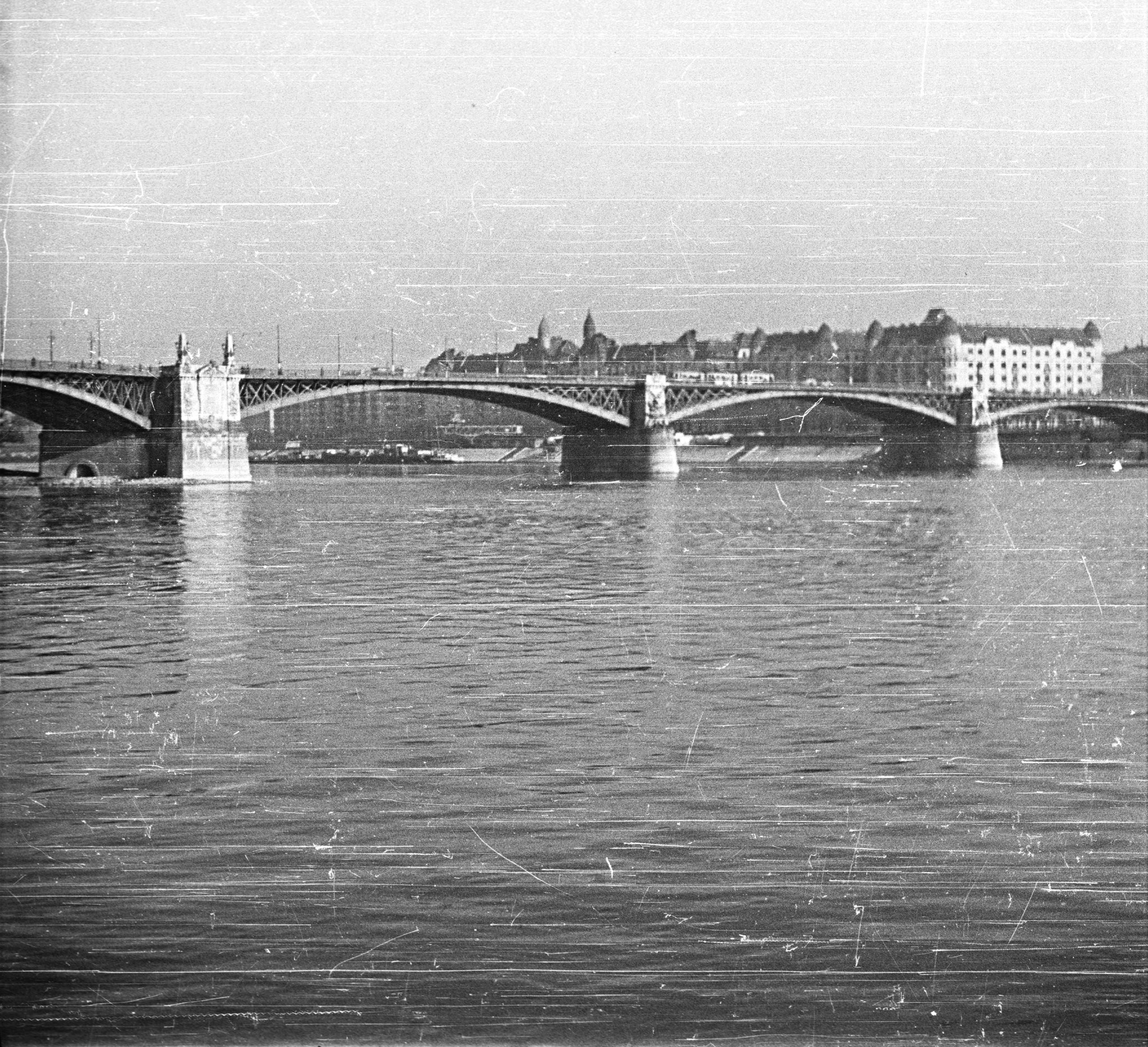
The Margit Bridge in 1942 (Photo: Fortepan/No.: 44024)
The government already dealt with the reconstruction of the bridges in Budapest at its meeting on 19 April 1945, and then several professional forums discussed the possibilities. It had to be decided in what order they would start the restoration. Among the most important aspects were the traffic role of the bridge and whether the necessary materials were available, but the complexity of the given task was also examined. Based on these, the Margit Bridge was ranked among the first Danube crossings to be restored, right after the damaged but not completely destroyed Ferenc József, the later Liberty Bridge.
However, the construction of the bridge had to be preceded by the removal of wreckage, since the structural elements and debris lying in the river not only endangered navigation but it was feared that they could also cause floods in the winter of 1945-1946, during the ice debacle. Just removing the wreckage took two years. Until they could start rebuilding the Margit Bridge, a special structure, the 'gas bridge', was built on the remaining pylons in 1945, because the gas pipeline was routed here between the two banks.
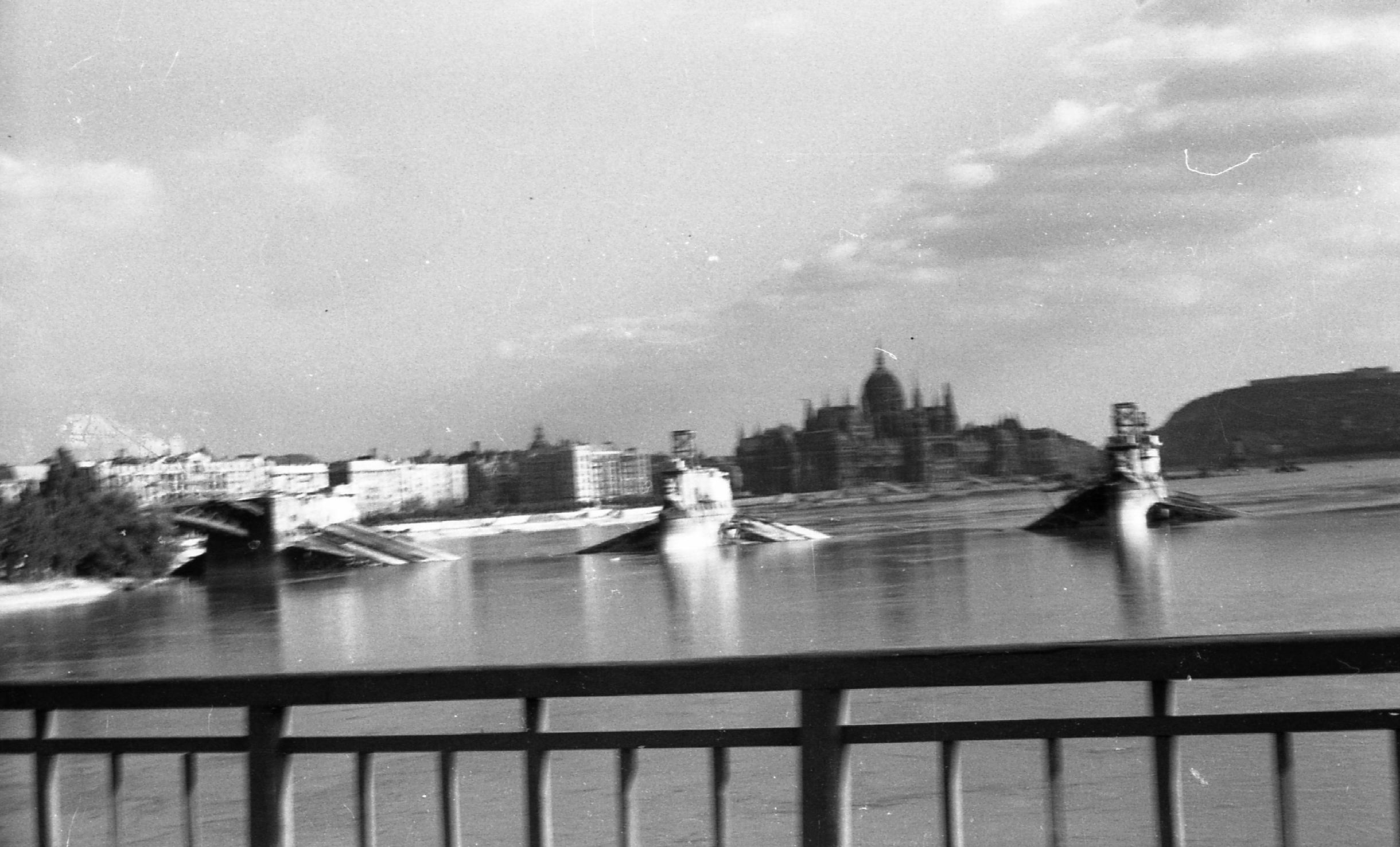
The ruins of the bridge in 1945 (Photo: Fortepan/No.: 45555)
There was another problem, on the one hand, there was not enough iron. The material would have been available, and the necessary quantity could have been produced, but the capacity of the iron works was completely occupied by the reparation work towards the Soviet Union. Therefore, the first decision was made that the new Margit Bridge will be a reinforced concrete bridge - i.e., a type of reinforced concrete bridge - since much less iron is needed.
The iron material needed for this structure had already begun to be produced, when the transport minister Ernő Gerő travelled to Ózd and agreed with Guido Temesszentandrássy, the chief engineer of the roughing rolling mill of the Ózd Metallurgical Works, that the necessary steel material would be produced in extra shifts, in addition to the Soviet reparation works.
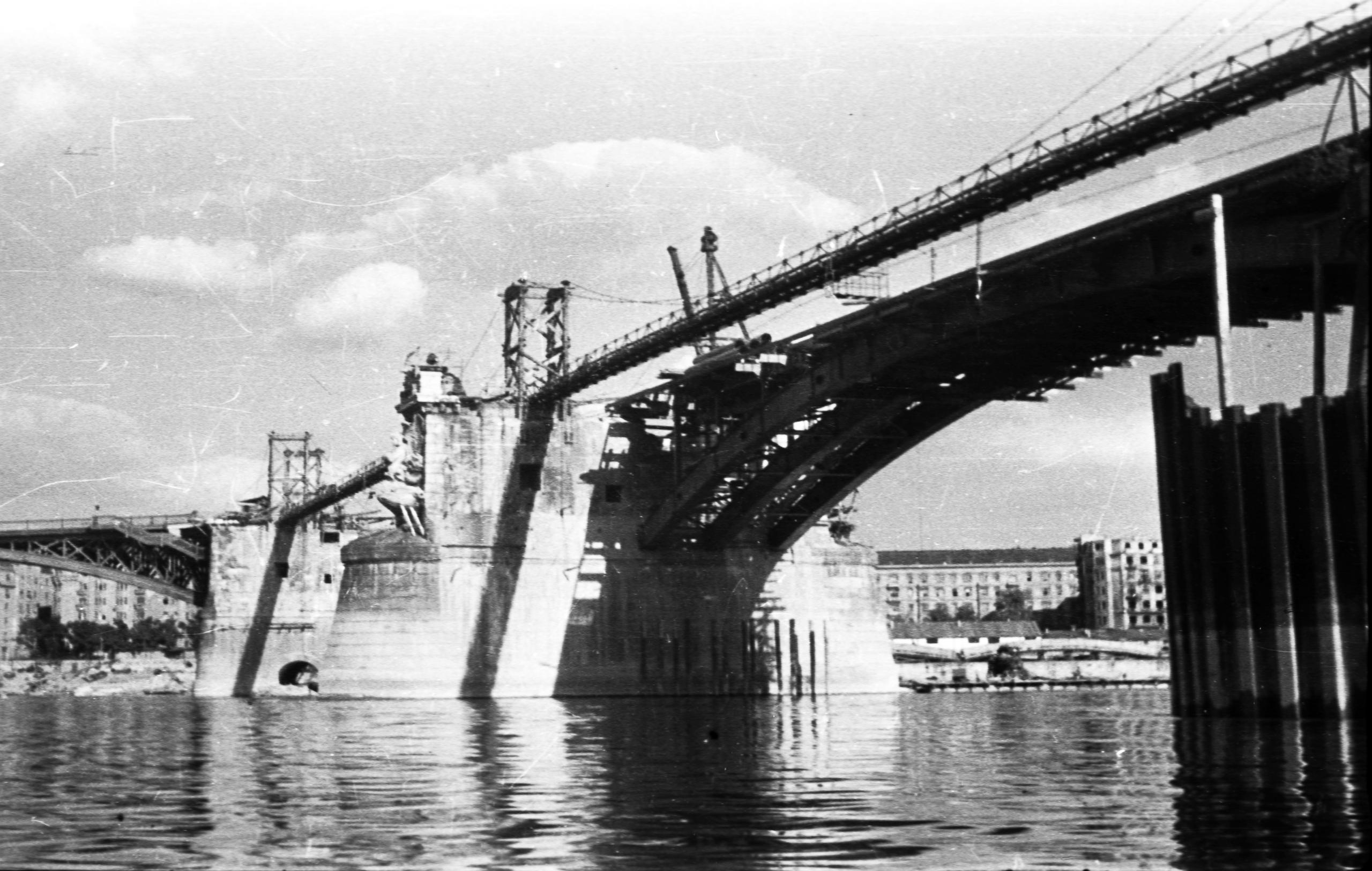
Construction of the bridge, the gas pipe can still be seen on the north side (Photo: Fortepan/No.: 117892)
This extra work almost turned into a big problem, because the Soviets took Guido Temesszentandrássy, but he was finally released after a few days. In this way, the necessary material could be manufactured in Ózd so that the Margit Bridge would not be rebuilt from reinforced concrete, but from steel, like the old one.
The works started in the middle of 1946, first of all, the pillars damaged in the explosions had to be fixed, strengthened and slightly modified, because although there was enough material to build a bridge similar to the original and not reinforced concrete, a few important changes were decided in relation to the bridge. On the one hand, the arches became higher on the new bridge, and this was achieved by moving the point where the arches rest on the pillars by half a metre, which is why new impost blocks had to be created on the pillars. The track of the bridge is half a metre higher than the old one, so the arches are more ideal and curve better, reaching one metre higher than the old one. In other words, if we had the opportunity to place the bridge's current and pre-World War II main girders of the same length next to each other, then the highest point of the old arch would be one meter lower than the new one.
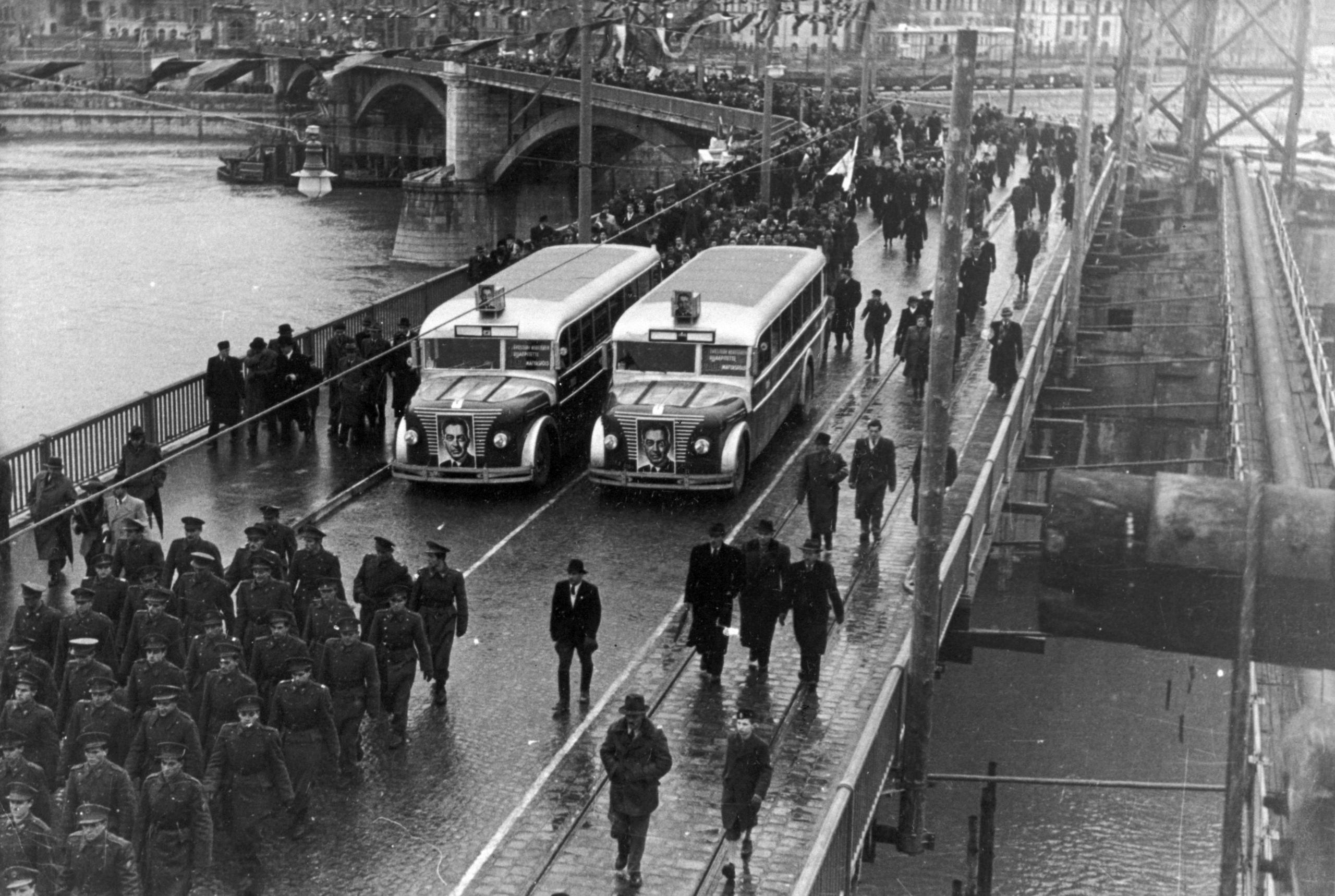
Handover of the half-finished bridge on 16 November 1947 (Photo: Fortepan/No.: 204103)
Another difference is that on the old bridge, 8 main girders held the track, six were made between 1872-1876, and two were added later, in 1935-1937, when the bridge was widened. During the reconstruction, though the width of the bridge was increased, six main supports, which were stronger than the old ones, were enough. There was also a difference in the fact that the cross bars between the arches and the longitudinal supports were left out, there were only vertical columns between them (these X-shaped cross bars, known as St. Andrew's Crosses, were put back during the last renovation).
The work started in the middle of 1946, and it was planned from the beginning that the bridge would be built in two parts, first, it would be only half-width so that there would be a permanent crossing here as soon as possible.
The southern side was completed first, and it could be handed over already in the fall of 1947. It was a huge achievement that they managed to finish this work process 6 weeks before the set deadline. The newspaper Reggel put it this way in its 17 November 1947 issue:
"In Buda, from Pálffy Square to the bridgehead, in Pest from the Nyugati Station to the Danube bank, there are flags, signs, and at the Buda bridgehead, there are three brand new carriages of the flourishing 6 tram, which will roll along the rails of the new bridge for the first time."
According to reports, tens of thousands of people were present at the inauguration on a rainy, overcast Sunday, and of course the political leaders as well. Minister of Transport Ernő Gerő and President Zoltán Tildy also gave speeches.
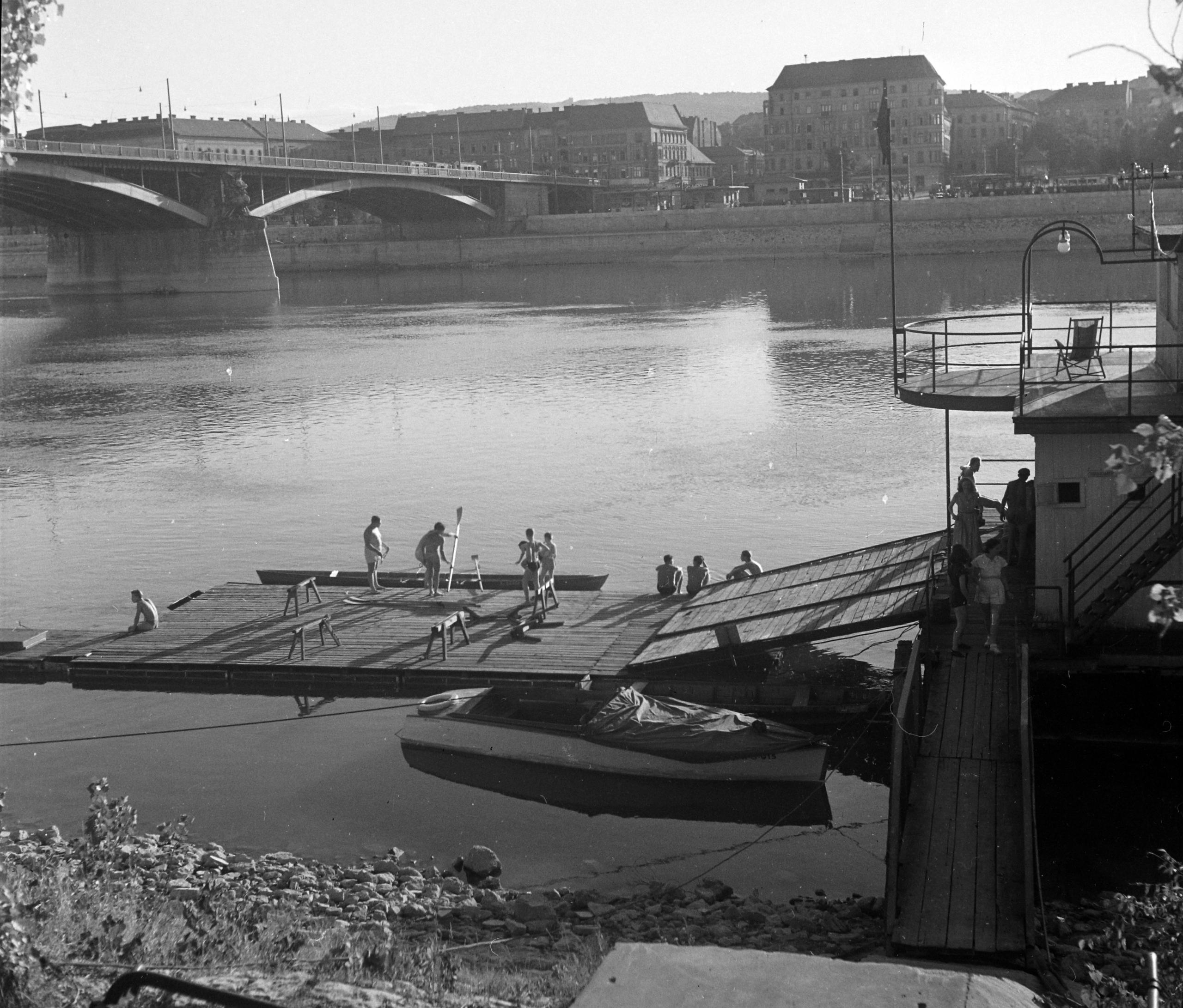
The finished bridge in 1950, it seems that the St. Andrew's Crosses are missing (Photo: Fortepan, UVATERV)
The construction of the bridge continued after that. First, the gas pipeline had to be moved to the location of the Újpest railway bridge, so that while traffic was flowing on the south side, the workers could build the north side. The rebuilt Margit Bridge was handed over to its full width in 1948.
Cover photo: The half-width completed bridge (Photo: Fortepan/No.: 204105)

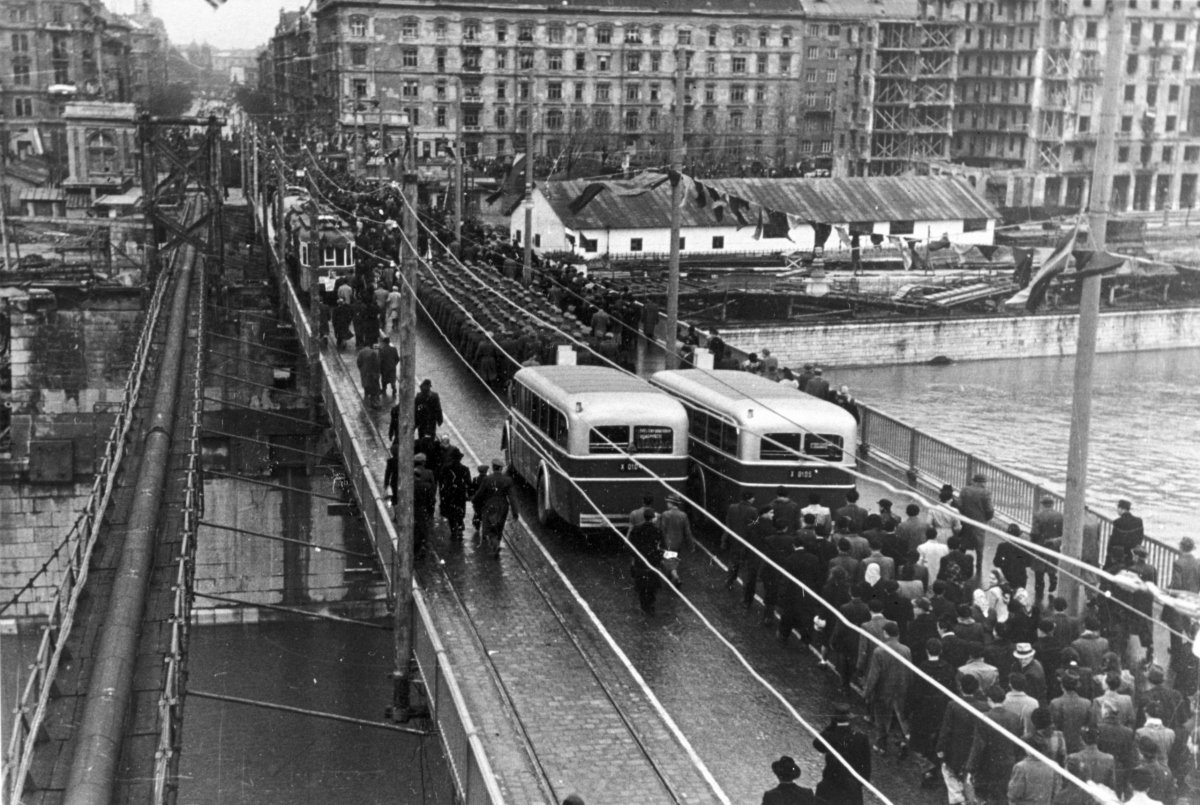


































Hozzászólások
Log in or register to comment!
Login Registration